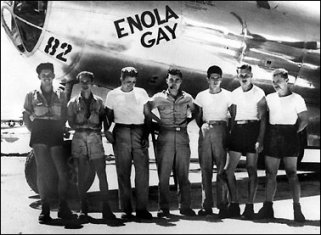Hiroshima Redux
The Ash Garden, Dennis Bock, 2001
Here Bock creates three fictional characters to explore the impact of the nuclear age. The first is a non Jewish German nuclear physicist who voluntarily leaves Germany in 1938 because he thinks the direction of world renowned Heisenberg relying on Heavy water is wrong and wants to find an environment that will support his own research. He joins Fermi in Chicago and is then recruited for the Manhattan project in Los Alamos New Mexico. After the bombing of Japan, he is sent with a group of scientists to study the effects of the bomb on Hiroshima. In Japan he acquires a home movie camera and secretly shoots a lot of film. All pictures and film of Hiroshima are heavily censored by the American occupation. The scientist never shows his films to anyone.
Aside: Hitler believed that the war would be over before a nuclear bomb could be developed and gave few resources to the effort. Scientist Otto Hahn and Austrian Jewish scientist Lise Meitner discovered nuclear fission when they continued the earlier work of Hungarian Enrico Fermi. Hahn helped Meitner escape to Sweden but the Nazis killed other Jewish scientists.
The second character is the daughter of a Linz Austrian Jewish instrument maker who sends his daughter out of Austria in 1938 to protect her. She ends up in a refuge camp near Quebec City in Canada where she meets the Germany scientist and they are married.

Ruins of Downtown Hiroshima
The third character is a Japanese girl who was six years old living in Hiroshima when the bomb was dropped. Her parents and brother were killed and she was badly disfigured. She was raised by her aging but wise grandfather, a doctor, and came to the States when she was fifteen to undergo reconstructive surgery in a program sponsored by American charities. The surgery is successful but when her grandfather dies and she stays in the States becoming a documentary filmmaker.
After the war, the European characters assume all their relatives have died and they never return to Europe. All three characters are now orphans.
The German scientist retires with his Austrian wife to a small resort town on Lake Ontario in Canada. Every year on August 6 the anniversary of the bombing, he travels to New York to participate in a commemorative conference. He continues to believe his work was important and saved lives in the war and he defends his work at each conference. In 1995, where most of the novel takes place, the Japanese woman, now 56 attends the conference and meets the German scientist. Normally wary of bombing victims, the scientist agrees to be interviewed by the Japanese woman for a documentary and then invite her to Canada to view his personal Hiroshima films.

On the crewman who dropped the bomb Bock writes:
But when he saw the bomb fall away like a great dinosaur egg, his sense of purpose returned. He knew how powerful this thing was said to be. But he’d trained himself not to contemplate it. Remember the big picture, he thought…. Win the war.

This building became an icon of the bombing appearing in Alain Resnais’ s 1959 movie Hiroshima Mon Amour. The building was preserved as a monument and reminder.